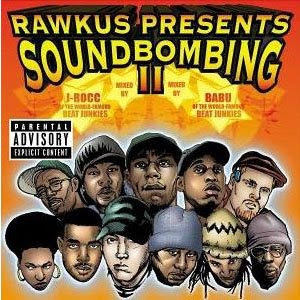
Track List
1. El Rincón Caliente
2. Para bailar el montuno
3. Deuda
4. El reloj de Pastora
5. Me bote de guano
6. Mi corazon no tiene quien lo llore
7. Tengo que olvidarte
8. Canta montero
9. Chicharronero
10. No vuelvo a moron/Las Tres Marias/Apurrunenme mujeres Medley
11. Dombe dombe



http://www.nonesuch.com/artists/manuel-guajiro-mirabal
Personnel: Manuel Mirabal (trumpet); Pepe Maza (vocals, claves); Demetrio Muniz, Ibrahim Ferrer, Aldo Del Rio, Carlos Calunga, Diego Ramon Palacio, Tirso Oriol Duarte Lescay (vocals); Manuel Galban (guitar, organ); Papi Oviedo, Jose 'Maracaibo' Castaneda, Johnny Neptune (tres); Polo Tamayo (flute); Javier Zalba (alto saxophone, baritone saxophone); Rolando Sanchez, Pantaleon Sanchez (alto saxophone); Alfred Thompson, Antonio Jimenez, Rafael 'Jimmy' Jenks (tenor saxophone); Ventura Gutierrez (baritone saxophone); Yaure Muniz, Luis Alemany Conde, Alejandro Pichardo (trumpet); Jesus "Aguaje" Ramos (trombone); Ruben Gonzalez, Roberto Fonseca (piano); Cachaito Lopez (double bass); Manuel Anga Diaz (congas); Roberto Garcia, Carlos Gonzalez (bongos); Enrique Lazaga (maracas); Amadito Valdes (timbales); Diego Coppinger
A trumpet player who learned at his father’s knee, Mirabal began playing professionally in 1951. He joined the jazz band ‘Swing Casino’ on 1953 before forming the ‘Conjunto Rumbavana’ three years later. In 1960, he joined the ‘Orquesta Riverside,’ whose singer Toto Gomez gave him his nickname ‘Guajiro’ Mirabal. There followed spells with ‘Orquesta del Cabaret Tropicana,’ directed by Armando Ramer, the ‘Orquesta del ICRT,’ the official orchestra of Cuban state radio and television. He had also toured with Oscar de Leon and Jose Feliciano.
BVSC presents Manuel Guajiro Mirabal is a debut album for Mirabal who was not only an integral figure of the Buena Vista series of releases, but for decades his trumpet sound has accompanied many cuban maestros and cuban orchestras or ensembles. For this album, Mirabal is paying tribute to Arsenio Rodriguez, an important figure and inovator in the world of Cuban music. Known as "El Ciego Marvelloso" (The Blind Marvel), Rodriguez was one of the pioneers of the conjunto and by introducing congas, piano and extra trumpets he totally transformed the looks of Cuban music forever. So, the music on this album is based upon Rodriguez's music or is music inspired by this revered figure. The configuration of instruments that Mirabal chooses, three trumpets, tres, guitar, percussion, piano and the roller coaster of lead and backing vocals, presents the classic conjunto configuration. Supported by a great ensemble who previously worked (most of them) on Omara Portuondo's Flor De Amor, this record is providing another adventure in Cuban music. The music is rough, dynamic with brilliant performances by each memeber of this "specially assembled group." Although it is driven by many tempos and styles it never losses its grip and focus. It kicks off with "El rincon caliente" which sets the scenery to come-impassioned vocals, plenty of rhythms and brilliant brass work. "Para bailar el montuno" is a showcase for Manuel Galban's guitar brushes as well as Papi Oveido's delicate tres playing. "Deuda" features guest vocalist Ibrahim Ferrer who provides emotional vocals and is supported by the trumpet trio comprised of Luis Alemañy, Alejandro Pichardo Pérez and Guajiro. Polyrhythms just burst throughout the whole record and it never losses the dynamics one has come to expect of these muzos.
The closing track is "Dombe Dombe" with Guajiro's seductive trumpet lines and delicate piano lines provided by Roberto Fonesca, who is featured prominently, contributing to the music's exotic mood. Nevertheless, this recording is a marvelous mixture of various afro-cuban styles and jazz, but the interplay between the musicians is really the treat of the album.



















.jpg)

.jpg)



